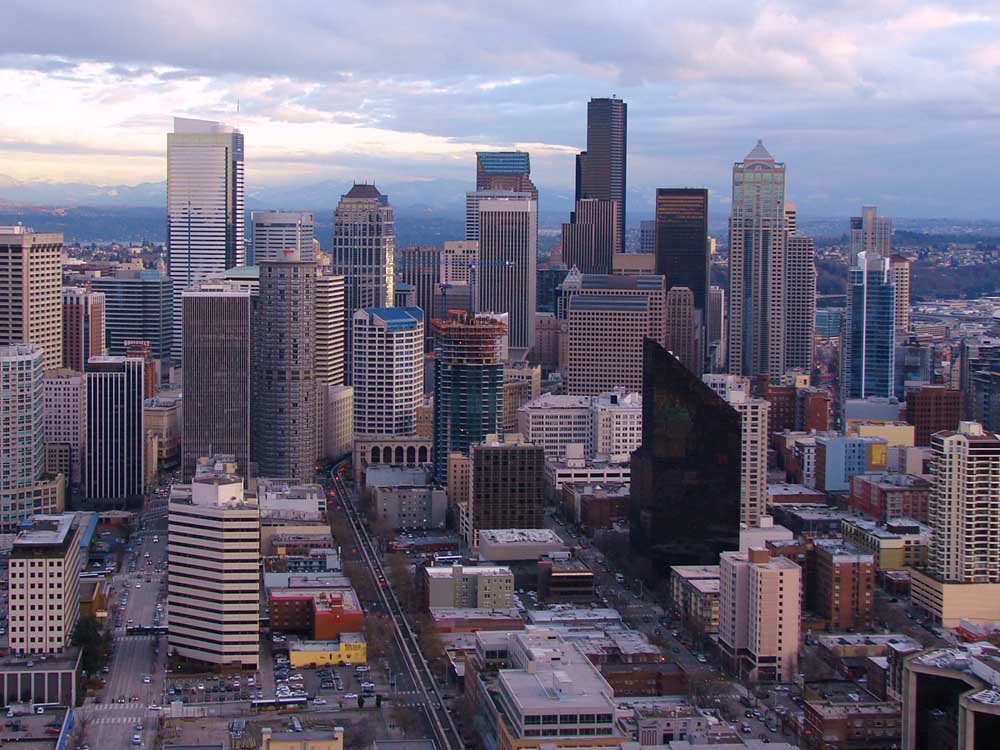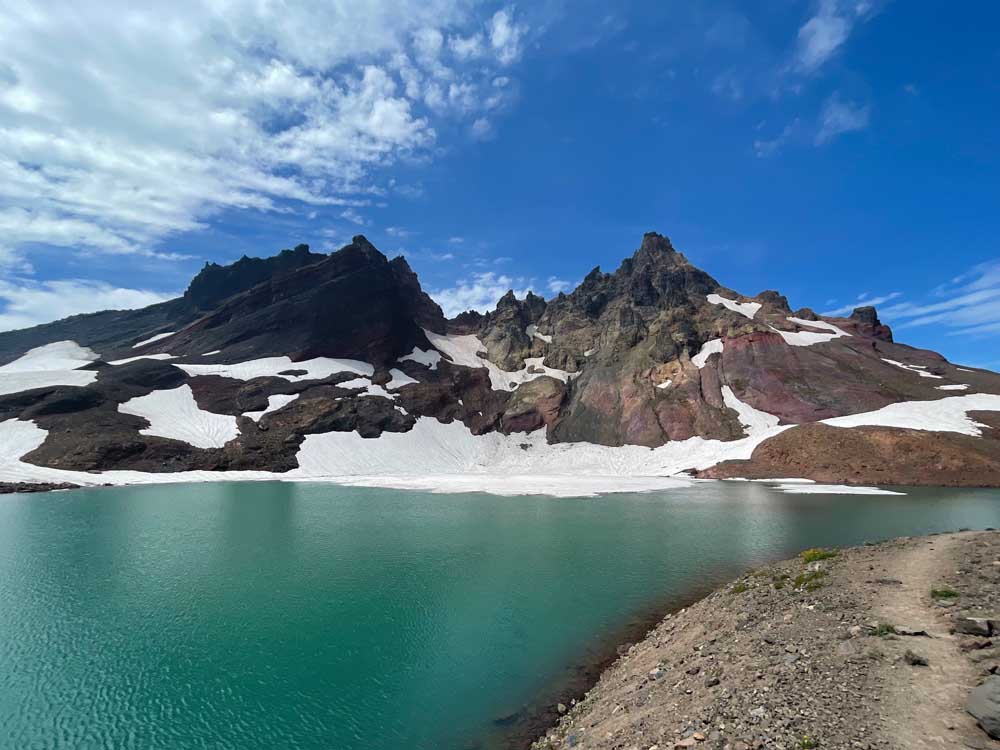Seattle for families
Published 12:00 am Sunday, January 3, 2016

- John Gottberg Anderson / For The BulletinWith a metropolitan population of 3.6 million, Seattle is the Northwests largest city and a popular destination for family vacations. Downtown Seattle, as seen in this view from the Space Needle observation deck, has many attractions of its own.
SEATTLE —
A trip to the Northwest’s largest city need not be something only for the adults in the family.
Trending
An urban experience in Seattle, a six-hour drive from Bend, can be as much of a learning opportunity for kids as for grown-ups, a chance to meet new people and to visit places quite unlike the natural attractions of Central Oregon.
With a metropolitan population of 3.6 million living in the shadow of lofty Mount Rainier, and nearly 700,000 just in this city on the shore of Puget Sound, Seattle has plenty to offer — from living history to fine-art exhibitions, great music to outstanding ethnic restaurants. And whether you want to see your children absorb a little culture or just have fun, this city’s options are legion.
Probably the best place to start a family-friendly exploration is Seattle Center, the 74-acre urban park and festival center built to host the 1962 Seattle World’s Fair. Crowned by the city’s iconic Space Needle, and including such symbols of Seattle as the Pacific Science Center and the EMP Museum, it also has plenty of open space, including a central fountain where youngsters often play in warmer weather.
The hub of downtown Seattle is the Pike Place Public Market — especially its semi-legendary fish market, where salmon fly and monkfish lunge at passers-by (courtesy of the fishmongers, of course). From the aquarium and the giant Ferris wheel on the waterfront, to the only mildly scary underground tours of historic Pioneer Square, your kids will not be bored.
Beyond the urban core, there’s more. The Woodland Park Zoo, the Hiram Chittenden Locks on the Lake Washington Ship Canal and Boeing Field’s Museum of Flight are all major family attractions within a few miles north and south of the city center.
Seattle Center
Trending
Even 54 years after it rose above the Seattle skies like a flying saucer on a pedestal, the 605-foot Space Needle retains a futuristic flavor. It’s no longer the tallest building west of the Mississippi River; it now ranks seventh in Seattle. But its revolving observation deck offers 360-degree views of the surrounding Seattle skyline, Puget Sound and Cascade and Olympic mountain ranges, enhanced by telescopes and identifying signs. It takes just 47 seconds to ascend the 520 feet from ground level to this deck. On the floor below, the SkyCity restaurant serves a Northwest cuisine menu that features a gourmet kids’ menu (think pasta and beef teriyaki skewers). And there’s a great gift shop, SpaceBase, on the ground floor.
At the foot of the Space Needle is the new (in 2012) Chihuly Garden and Glass, the magnum opus of famed glass artist Dale Chihuly, a native of metropolitan Seattle. While it’s wise to keep a close eye on young children at this remarkable exhibit, they’ll be dazzled by the brilliant colors and shapes of this collection of blown glass works, which span decades. Outside exhibits are placed in a lush garden and in a 40-foot Glass House, beside which stands a mobile hot shop where artists demonstrate the art of glass blowing in a retrofitted Airstream trailer.
Once the Experience Music Project, the EMP Museum of music and popular culture was opened in 2000 by Microsoft co-founder Paul Allen as homage to rock musician (and Seattle native) Jimi Hendrix. Avant-garde architect Frank Gehry designed the unique building. Headphones with multiple music selections accompany exhibits about such Northwest bands as Nirvana; the Sound Lab encourages visitors to learn guitar, keyboards and drums; a temporary exhibit, “The Supercute World of Hello Kitty,” draws young children. The Science Fiction and Fantasy Hall of Fame displays artifacts from sci-fi and horror movies of the past and present.
While the EMP has plenty of hands-on exhibits, they pale in comparison to what’s offered at the Pacific Science Center. Behind the pools and arches of this former World’s Fair pavilion is a learning center for children and their parents. While teens may be more interested in the IMAX films at its two theaters, younger children may be fascinated by such exhibits as Professor Wellbody’s Academy of Health and Wellness, where they can learn about the human body; Dinosaurs: A Journey Through Time; and a Tropical Butterfly House and Insect Village. Other exhibits showcase modern technology and a working model of tidal flow in Puget Sound.
Adjacent to the Science Center, the Seattle Children’s Theatre was the nation’s first self-contained theater complex built specifically for young audiences. Tours take in the two main stages, rehearsal and classroom spaces, plus paint, costume, prop and scenery shops. Playwrights adapt productions (some of them world premieres) for children of different ages: In early 2016, they include “Where the Wild Things Are” (Jan. 7 to Feb. 28, for age 4 and up) and “Hana’s Suitcase” (Jan. 21 to Feb. 7, for age 10 and up).
In the basement of the Seattle Center House, The Children’s Museum is geared toward younger children. Global Village transports visitors to West Africa, the Philippines and Japan; Cog City teaches elementary laws of physics; Fort Adventure motivates young contractors to build shelters; and the Imagination Studio welcomes budding artists. On the main floor, a variety of food outlets surround a central performance space.
The Center House stands next to the north terminal of the Seattle Center Monorail, which offers quick, low-cost trips between Seattle Center and Westlake Center, in the heart of downtown Seattle’s main shopping district. Best of all, kids under 4 ride free.
Downtown
The monorail terminal is a short walk from the Pike Place Public Market, a Seattle institution since 1907. The market has more than 10 million visitors a year to its 200 permanent businesses in a 17-acre district that sprawls across a bluff overlooking Elliott Bay. Another 120 farmers and 190 crafts people rent table space by the day, and 240 musicians and street performers are licensed to play at the market. That adds up to a lot of impromptu theater for youngsters. But if you’re here at a particularly busy time (especially weekends and holidays), don’t let go of your youngest children’s hands. It’s easy to get lost.
That’s not a problem at the Seattle Art Museum, just a few blocks south on First Avenue. It’s unmistakably identifiable by Jonathan Borofsky’s kinetic “Hammering Man” sculpture at the building’s southwest corner. Apart from an impressive collection of art that ranges across world cultures from ancient to contemporary, “SAM” encourages young visitors with an activity guide, used to explore the exhibits with adults, and its Chase Open Studio, which provides paper, crayons, even beads for the pleasure of young Picassos.
The next street over, on the ground floor of Benaroya Hall, the Seattle Symphony welcomes young people to its Soundbridge Music Discovery Center. Admission is “free” (pay what you can) from 10 a.m. to 2 p.m. every Friday, when children visit with their parents to listen to musical stories and tinker with musical instruments. At other times, there are a variety of scheduled classes, workshops, concerts and special events.
Visitors to the Seattle Aquarium, at Pier 59, are greeted by the stunning Window on Washington Waters, a 120,000-gallon saltwater tank with a 40-foot window on Puget Sound marine life: salmon, rockfish, eels, sea anemones and other denizens of the deep, sometimes joined by scuba divers. There are touch pools, a giant Pacific octopus, a jellyfish tank, a coral reef exhibit, a variety of marine mammals including seals and otters, and much more.
Practically next door is the Seattle Great Wheel, extending 40 feet into Elliott Bay at the end of Pier 57. The 175-foot Ferris wheel, its colored lights emblazoning the Waterfront, was a new addition in summer 2012. A ride in one of its 42 gondolas, designed in Europe and equipped with heating, air conditioning and see-through floors, takes 12 minutes to complete a circuit.
Historic Pioneer Square, at the south end of downtown, may not hold a lot of interest for younger children. But for youth with an interest in events of the late 19th century, it could be a worthwhile stop. The original “Skid Road” was here, where hilltop lumber mills slid logs to harborside sawmills, but a great fire in 1889 destroyed much of downtown. Wooden structures were replaced by brick and mortar as Seattle boomed again as a staging center for the Klondike Gold Rush of the 1890s. A popular way to discover the past is to join an Underground Tour.
Beyond downtown
At the south edge of Lake Union, beside the Center for Wooden Boats, the Museum of History and Industry has three core exhibits. “True Northwest: The Seattle Journey” highlights 25 significant chapters in the city’s history; “Maritime Seattle,” has artifacts that include a World War II periscope; and the “Bezos Center for Innovation” spotlights the city’s industrial innovators, from Boeing to Microsoft and Starbucks. More exciting to young people, perhaps, is a temporary exhibit — scheduled until May 1 — entitled “The Legacy of Seattle Hip-Hop.”
Lake Union is fresh water, linked with large Lake Washington and saltwater Puget Sound through the Lake Washington Ship Canal. Ships pass through this waterway thanks to the Hiram M. Chittenden Locks. Located west of Lake Union in the Ballard neighborhood, they were built in 1917 by the U.S. Army Corps of Engineers to raise and lower ships between 6 and 26 feet, depending upon the tides. There’s no charge to explore the visitor center, a fish ladder for spawning salmon, or a botanical garden, and more often than not, youngsters are intrigued.
Big boats and small ships, however, won’t hold children’s interest like exotic animals. The Woodland Park Zoo, a couple of miles north of the Ship Canal, can occupy the interest of visitors of all ages for hours. Highly regarded for exhibit areas that replicate natural habitats, it offers outstanding African savanna and tropical Asia sections, and a variety of other exhibits including the new Northern Trail for regional species. Younger kids like the petting zoo on the “Family Farm,” a historic carousel, and an opportunity to feed fish to Humboldt penguins.
No Seattle-area aviation display is closer to the city center nor more extensive than The Museum of Flight at Boeing Field, a few miles south of downtown with easy access off Interstate 5. Among the world’s largest air-and-space museums, it displays more than 160 historic craft from the era of the Wright Brothers to modern moon landings. Kids of all ages appreciate the interactive exhibits, which include flight simulators. On the grounds are a former Air Force One plane, a NASA Space Shuttle trainer and the new Boeing 787 Dreamliner.
— Reporter: janderson@bendbulletin.com








